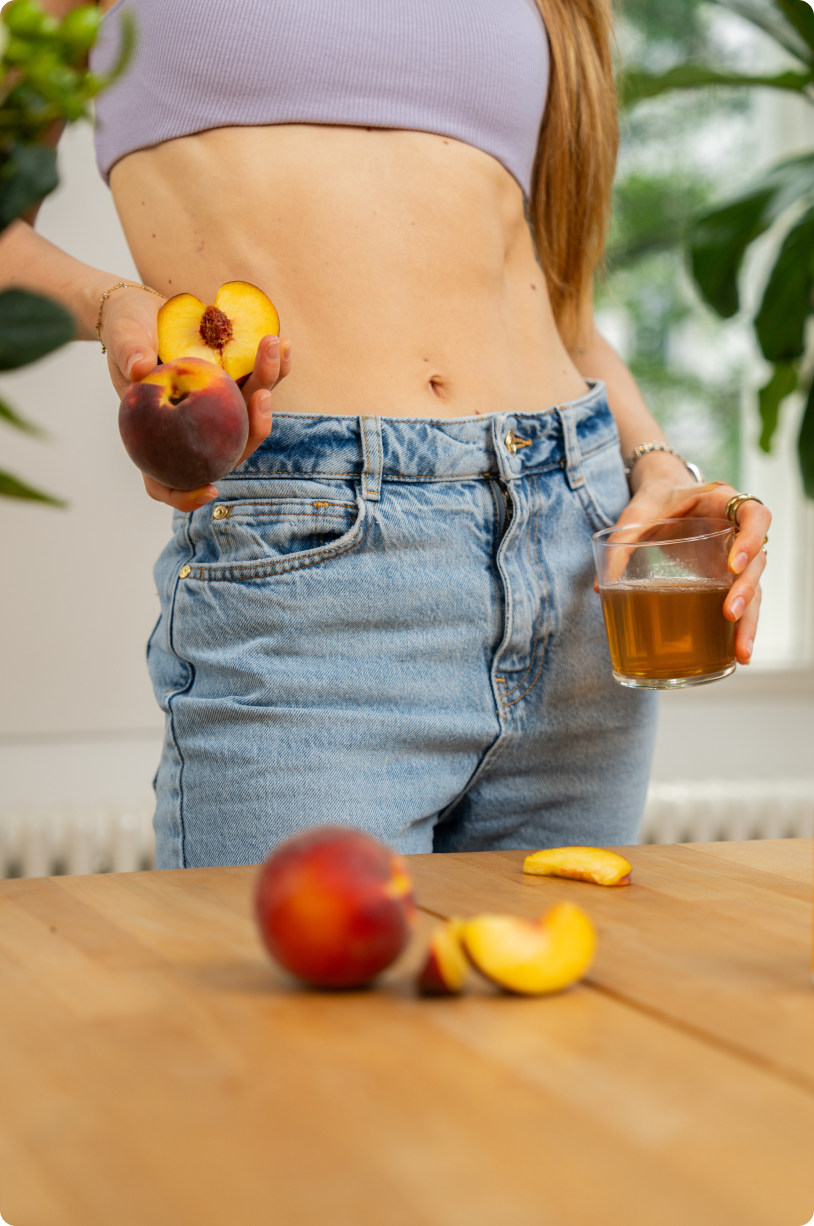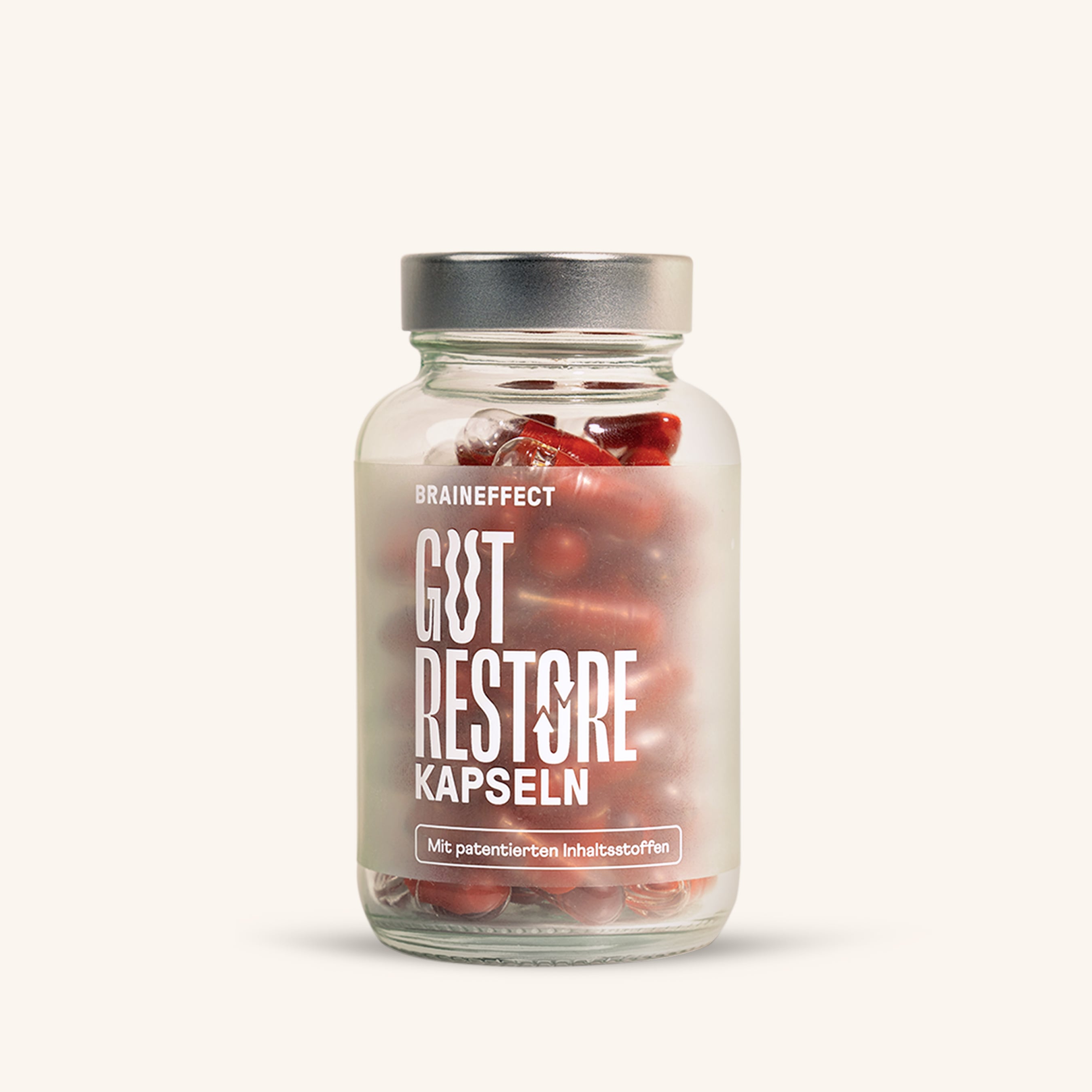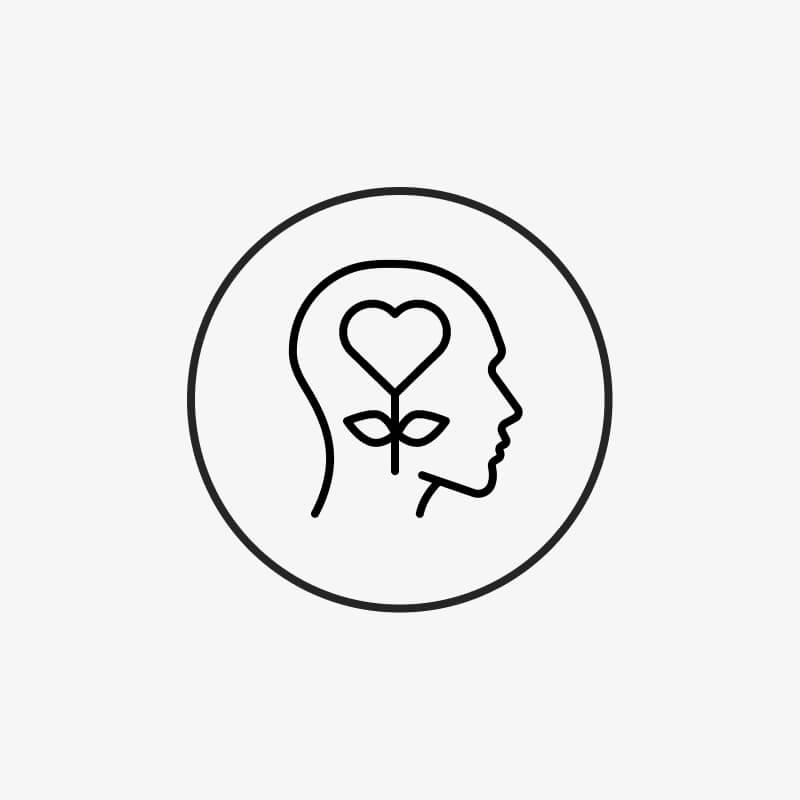Feeling down during the cold season? Damn, it could be the winter blues! We'll tell you everything you need to know about seasonal mood swings.
TABLE OF CONTENTS
1. WHAT IS WINTER DEPRESSION?
When it comes to winter depression or a seasonal low mood, the name says it all: Along with the temperatures and hours of sunshine, your mood also plummets [1].
Winter depression is not a global phenomenon, but is closely linked to the weather conditions in the Northern Hemisphere . Northern European countries such as Germany, Sweden, and Norway, with strong fluctuations between summer and winter weather, appear to be particularly affected.
Seasonal low moods are usually caused by a vitamin D deficiency , which can, among other things, affect the production of the mood hormone serotonin . As the counterpart to the stress hormone cortisol, cortisol is responsible for a stable mood and emotions such as well -being, contentment, and happiness .
Since human vitamin D synthesis can be triggered primarily by UV rays on bare skin , a deficiency sometimes occurs during the long and dark winter months.
Light phenotypes (people with very light skin) have a slight advantage over dark phenotypes (people with very dark skin). Since sunlight penetrates the skin barrier more quickly in light skin types, they generally also receive a more powerful vitamin D boost.
As a rule of thumb , you can remember that your susceptibility to sunburn is loosely proportional to how effectively your body can absorb and store sun vitamins in spring and summer.
BRAINEFFECT HACK: MOOD by BRAINEFFECT provides you with natural ingredients like Rhodiola rosea and contributes to your well-being with L-tryptophan and many vitamins.
A seasonal low mood does indeed manifest itself in a similar way to mild depression . What's striking, however, is that those affected don't suffer from low moods year-round.
Typical depressive symptoms are:
- Exhaustion and general lack of energy
- Joylessness and intense sadness
- Neglect of beloved hobbies or social contacts
- Nervousness, inner restlessness and irritability
- Lack of appetite or cravings for sweets
- sometimes also sleep disorders
- and tiredness and often an above-average need for sleep (also known as “hypersomnia”).
Important: For seasonal depression to be suspected, at least four or five of these symptoms must be present. To be considered true winter depression, the mood swings must also last longer than two weeks .
Some symptoms, such as an increased need for rest and sleep , as well as cravings for sweets and high-carbohydrate foods, should n't be taken too seriously in isolation . After all, from an evolutionary perspective, winter is a dangerous time for us humans!
Hunger and the need for rest serve to build up nutrient stores and energy reserves . Although we no longer live in caves and have to wait several days for our next meal, similar programs to those of our ancestors sometimes still play out at the genetic level.
Another characteristic of the winter blues is its light-related progression : The seasonal low mood begins in the autumn months and can often last until the beginning of spring . When the days become warmer and longer, the symptoms usually disappear on their own.
Only in the first few weeks of spring can you occasionally experience mood swings and extreme fatigue . This is due to a seasonal change in your hormone levels .
BRAINEFFECT HACK: Listen to our podcast episode on the topic of "mental revolution." Steffen Kirchner, bestselling author and one of Germany's most sought-after motivational speakers and keynote speakers, explains how you can specifically change your thinking to achieve your goals . Enjoy!
The winter blues are a strange phenomenon that hasn't been around for very long. We'll tell you 4 surprising fun facts about this seasonal blues!
1. Officially, “seasonal mood swings” have only existed for about 40 years!
Hard to believe, isn't it? After all, winter has been around for a long time. Nevertheless, the characteristic symptoms weren't identified until 1984 by the American scientist Norman Rosenthal [2].
In 1987 , the symptoms were officially included in the American Diagnostic and Statistical Manual of Mental Disorders (DSM) [3]. However, seasonal mood disorders had already been identified and documented several hundred years earlier.
2. Most cases do not necessarily occur in northern countries
This fact is not only fun, but also kind of weird. Why is this, if the lack of sunlight is the cause of the winter blues? Scientists are speculating about this. However, it actually seems that the longitude of your location is the primary determining factor .
One explanation could be that people whose ancestors also lived in very dark and cold regions such as Norway, Iceland, or Alaska are genetically better adapted to the lack of light . A study from the USA has now shown that Icelanders living in Canada were less susceptible to seasonal changes than Canadians [4].
3. … but southern regions remain spared
While the hypothesis “dark = seasonal mood swings” is not necessarily correct, we can largely confirm the hypothesis “light and warm = no seasonal mood swings” .
Very bright and summery regions like the US state of Florida or countries near the equator aren't affected by the winter blues . Year-round long days and strong sunlight keep them safe.
4. Scandinavian countries have their own light therapy
The winter months are particularly dark and intense in countries like Sweden and Norway . Sunlight reserves are rarely sufficient for hibernation there. However, the challenging weather conditions have made the Swedes very inventive: Sweden is the birthplace of light therapy .
From mood lighting to illuminated cafés : Swedes are well prepared for winter. The energy supplier Umeå Energi launched a particularly cool campaign in 2012: The company equipped bus stops with bright white light panels . Good PR for Umeå, and a boost for public transport!
Light therapy itself has been proven effective in studies. When used correctly, exposure to bright light can stimulate serotonin production and specifically compensate for the winter deficit [5].
First, you should check whether you're really suffering from a low mood or just a mild case of the blues . Depending on the case, you should see a doctor after about 14 days of persistent bad mood.
However, if you're simply gripped by the annoying winter blues , there are a few things you can do to combat them. You already know one of the best tips: sunlight and (artificial) UV rays .
If there's a bit of sunshine alongside the gray diesel weather, you should also take the time to enjoy it. To replenish your vitamin D reserves, you should expose your décolleté, forearms , and face to the sun for at least 20 minutes .
Another alternative could be a quick visit to a tanning bed . However, it's recommended to stay in the sun for a maximum of 20 minutes at low light levels . Your goal is NOT a tan or even a sunburn, but a good mood!
In addition , any activity that balances your hormone levels is also helpful. Exercise , especially (preferably outdoors), is very good for boosting your mood and motivation .
A diet rich in L-tryptophan or a product from our MOOD family can also be of great help. Tryptophan is found almost exclusively in animal foods and is considered a precursor to serotonin [6]. So, having good reserves in your amino acid pool will definitely help your mood too!
The winter blues can affect anyone at some point—especially in the Northern Hemisphere ! Here, the sharp decrease in sunlight during autumn and winter leads many people to symptoms resembling depression.
In addition to bad mood, sadness, irritability , and extreme fatigue , cravings or loss of appetite may also occur. However, winter depression is only considered to be present if the symptoms persist for at least 14 days .
The cause of seasonal depression is often a serotonin deficiency resulting from a vitamin D deficiency. Especially here in Germany and other northern European countries, stores of the sunshine vitamin are often insufficient to survive the winter.
If your blues are truly a seasonal depression , there's reason to rejoice: The problem should be over by March or April at the latest ! In the meantime, foods and smart nutrients containing L-tryptophan , (artificial) UV radiation , or exercise can help you produce serotonin.
6. SOURCES
[1] Targum, SD; Rosenthal, N. (2008), Seasonal Affective Disorder, Psychiatry (Edgmont), Volume 5, Issue 5, p. 31-33, https://www.ncbi.nlm.nih.gov/pmc/articles/PMC2686645/ .
[2] Rosenthal, NE (2009), Issues for DSM-V: Seasonal Affective Disorder and Seasonality, The American Journal of Psychiatry, Volume 166, Issue 8, re-published online, https://ajp.psychiatryonline.org/doi/full/10.1176/appi.ajp.2009.09020188 .
[3] American Psychiatric Association (2021), DSM History, available online, https://www.psychiatry.org/psychiatrists/practice/dsm/history-of-the-dsm .
[4] Axelsson, J.; Stefansson, JG; [...]; Karlsson, MM (2002), Seasonal Affective Disorders: Relevance of Icelandic and Icelandic-Canadian Evidence to Etiologic Hypotheses, The Canadian Journal of Psychiatry, Volume 47, Issue 2, PDF available online, https://journals.sagepub.com/doi/pdf/10.1177/070674370204700205 .
[5] Campbell, PD; Miller, A.M.; Woesner, ME (2017), Bright Light Therapy: Seasonal Affective Disorder and Beyond, Einstein Journal of Biology and Medicine, Volume 32, available online, E13-E25, https://www.ncbi.nlm.nih.gov/pmc/articles/PMC6746555/ .
[6] Jenkins, T.A.; Nguyen, J.C.D.; [...]; Bertrand, PP (2016), Influence of Tryptophan and Serotonin on Mood and Cognition with a Possible Role of the Gut-Brain Axis, Nutrients, Volume 8, Issue 1, p. 56, https://www.ncbi.nlm.nih.gov/pmc/articles/PMC4728667/ .
















